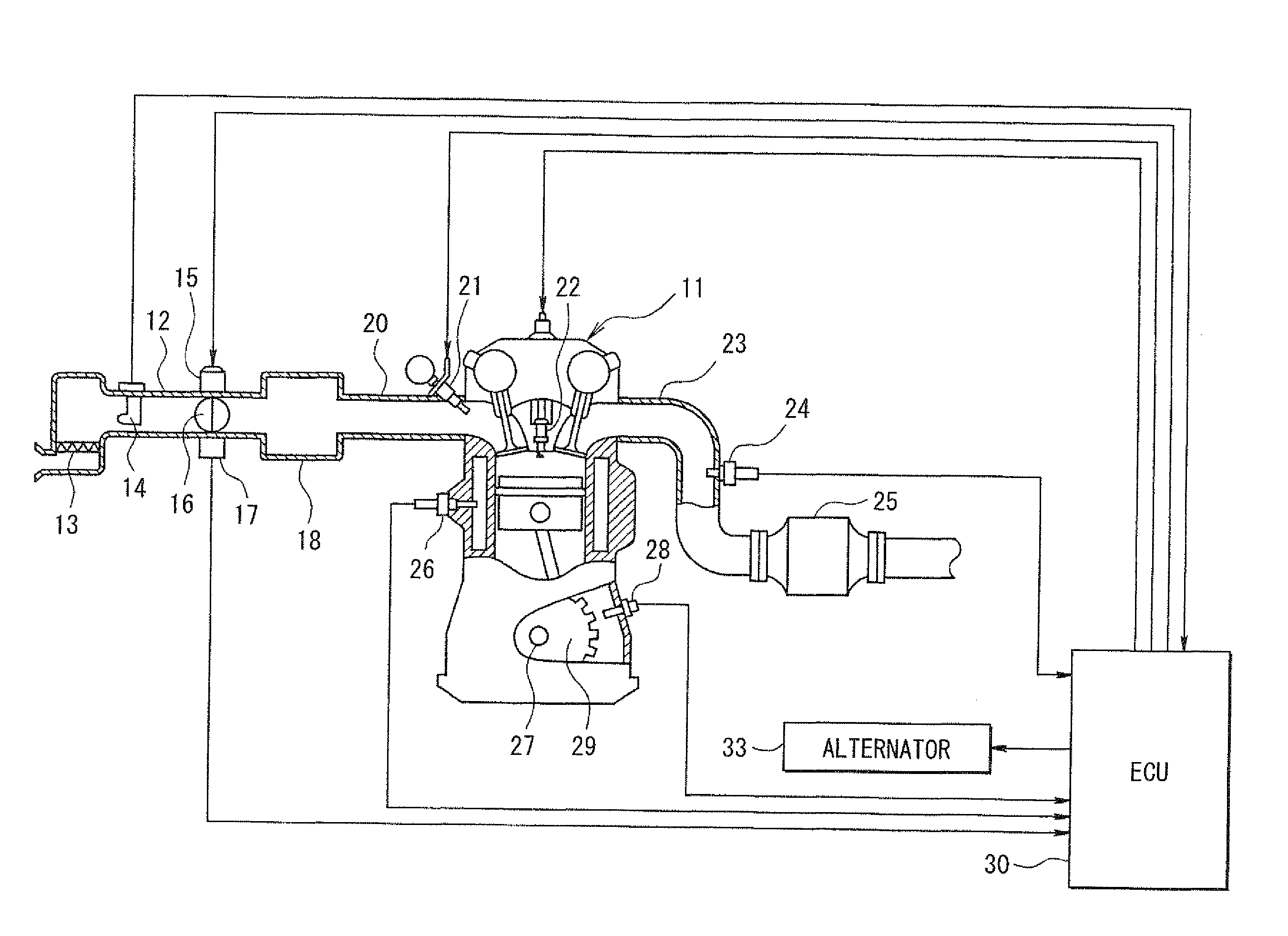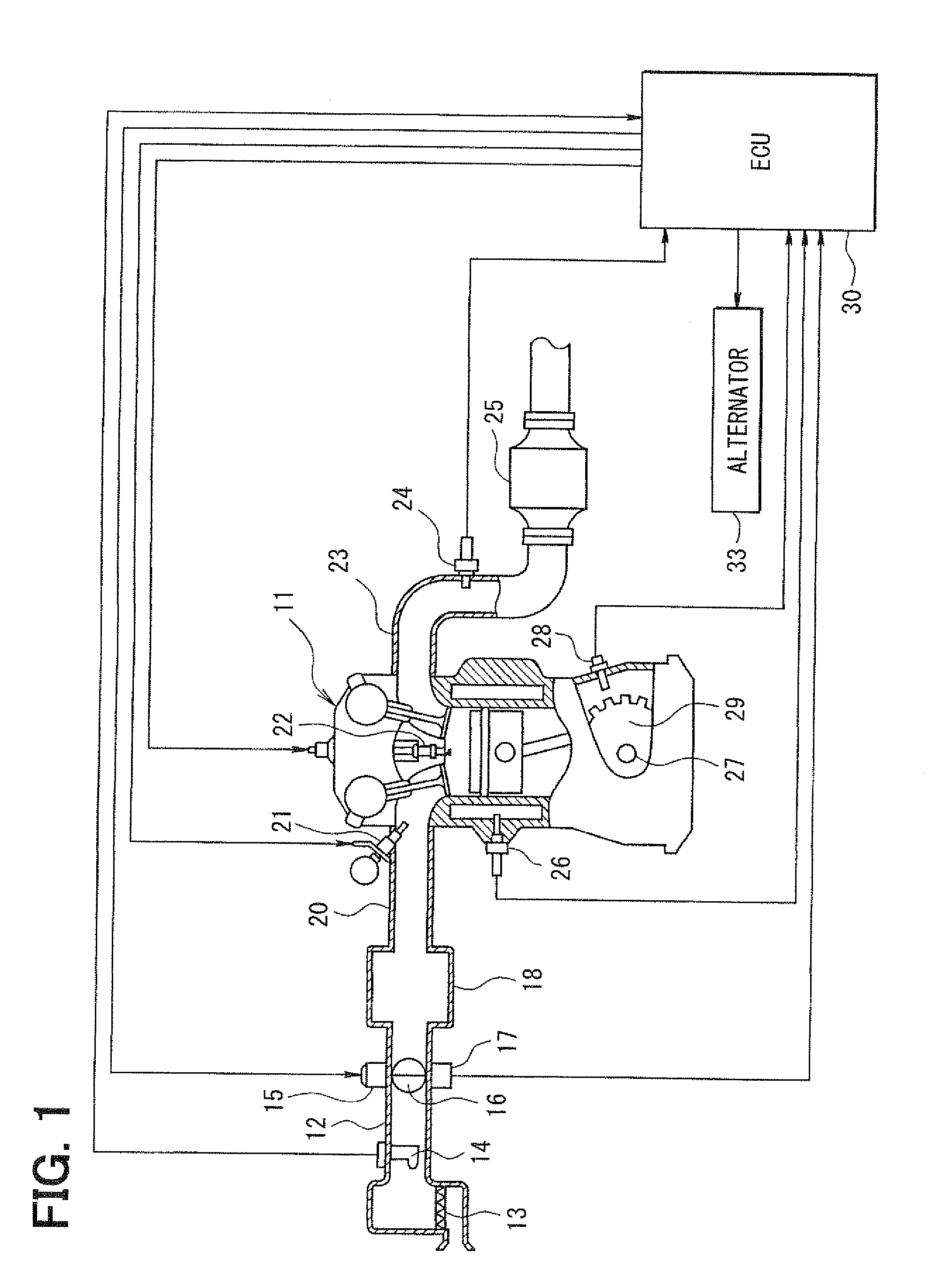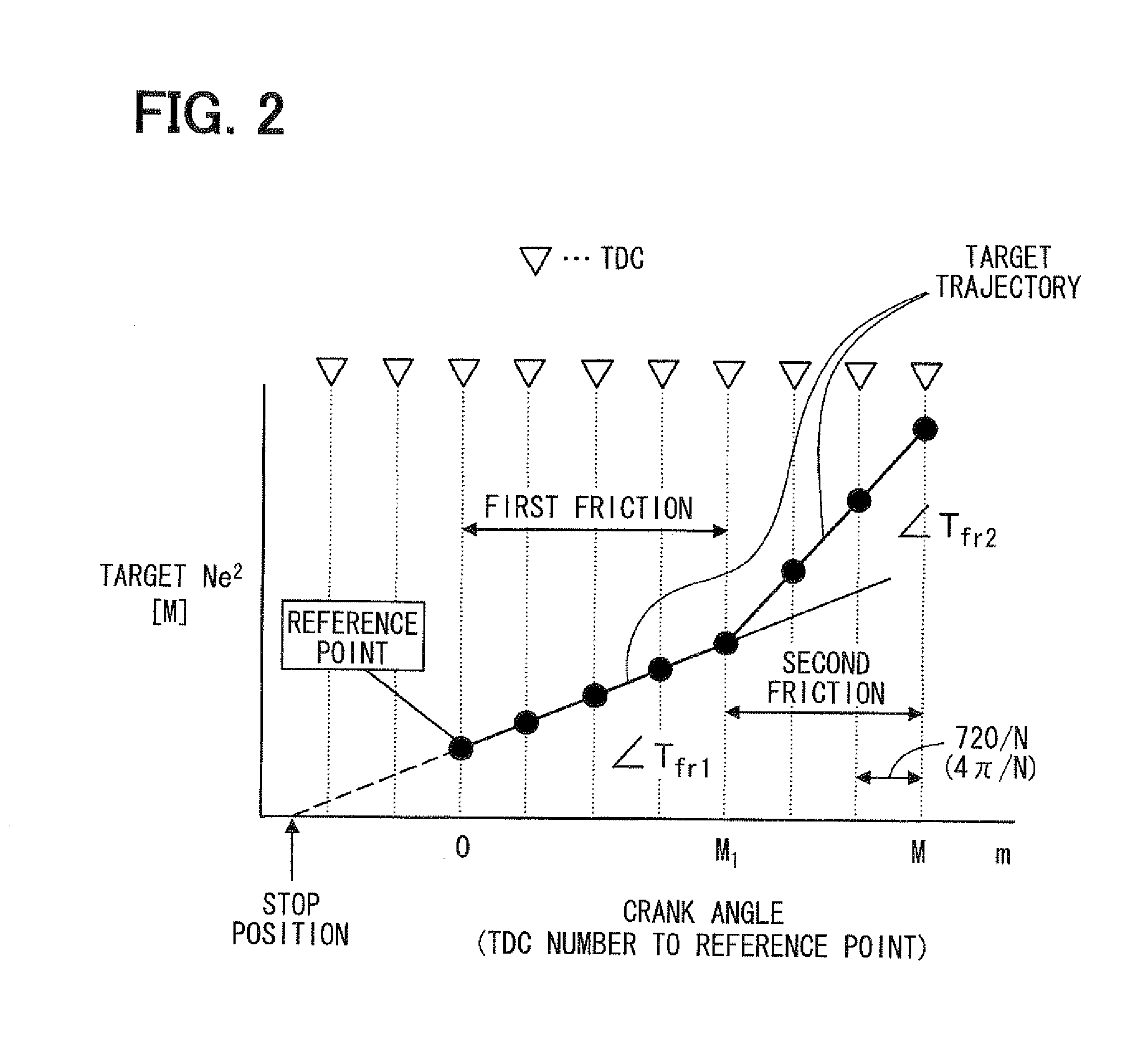Engine stop control device
a technology of engine stop and control device, which is applied in the direction of electric control, engine starters, instruments, etc., can solve the problems of difficult to sufficiently compensate, difficult to reduce the load of the alternator, and inability to exert a sufficient effect to so as to reduce the variation in the engine rotation stop position and improve the restarting performance
- Summary
- Abstract
- Description
- Claims
- Application Information
AI Technical Summary
Benefits of technology
Problems solved by technology
Method used
Image
Examples
Embodiment Construction
[0041]Hereinafter, an embodiment embodying the best mode for implementing the present invention will be described.
[0042]First, a schematic construction of entirety of an engine control system will be explained with reference to FIG. 1.
[0043]An air cleaner 13 is arranged in the most upstream portion of an intake pipe 12 of an internal combustion engine 11. An airflow meter 14 sensing intake air quantity is provided downstream of the air cleaner 13. A throttle valve 16, whose opening degree is regulated by a motor 15, and a throttle position sensor 17 sensing the opening degree of the throttle valve 16 (throttle opening) are provided downstream of the airflow meter 14. A surge tank 18 is provided downstream of the throttle valve 16. An intake manifold 20 that introduces air into each cylinder of the engine 11 is connected to the surge tank 18. An injector 21 that injects fuel is provided near an intake port of the intake manifold 20 of each cylinder. A spark plug 22 is provided to a c...
PUM
 Login to View More
Login to View More Abstract
Description
Claims
Application Information
 Login to View More
Login to View More - R&D
- Intellectual Property
- Life Sciences
- Materials
- Tech Scout
- Unparalleled Data Quality
- Higher Quality Content
- 60% Fewer Hallucinations
Browse by: Latest US Patents, China's latest patents, Technical Efficacy Thesaurus, Application Domain, Technology Topic, Popular Technical Reports.
© 2025 PatSnap. All rights reserved.Legal|Privacy policy|Modern Slavery Act Transparency Statement|Sitemap|About US| Contact US: help@patsnap.com



